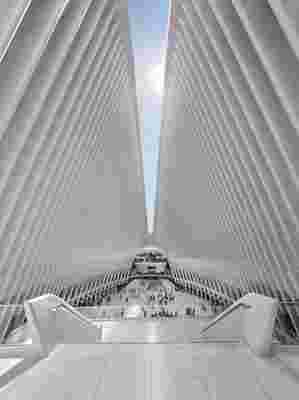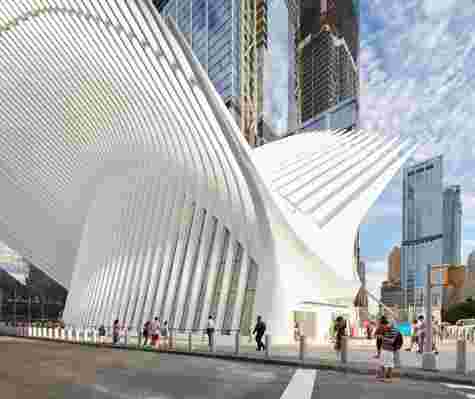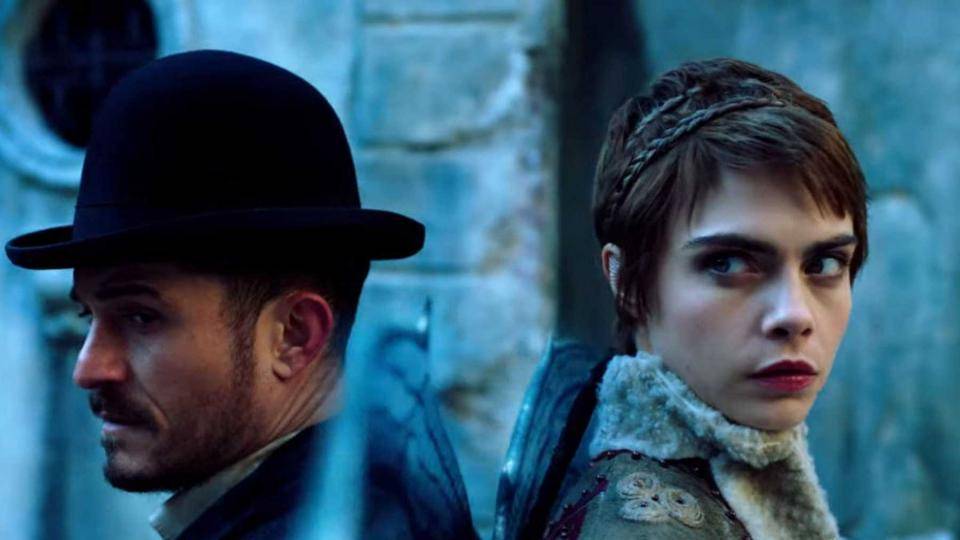November 05,2022
Santiago Calatrava Explains How He Designed the Oculus For Future Generations
by David Stewart
When you think of New York City structures, what comes to mind ? The Empire State and the Chrysler Building, certainly. But, so, too do the Statue of Liberty , the Brooklyn Bridge, and Grand Central Terminal. Perhaps more than other major cities, many of New York’s civic structures are among its most famous—visited by tourists and residents alike for sightseeing and function (though New Yorkers would plead, ‘Not at the same time, please.’). It is in this headspace that architect Santiago Calatrava approached the design of one of the city’s newest civic spaces—the Oculus, a transportation hub at the site of the September 11, 2001 attacks on the World Trade Center towers, and the subject of a new book from Assouline .
“I was just learning from New York to do something extraordinary,” reflects Calatrava. “All the city inspired me. I wanted to enter into this context. I wanted to emulate, not to imitate, but to emulate, Grand Central Terminal, such a civic monument and such a beautiful place.” The white winged Oculus is an organic form in the center of a new complex of towers, and memorial pools at the sites of the two that fell in 2001. As expected on such an emotionally charged site, the structure was not without its own controversy (it came to fruition seven years behind schedule and severely over budget, though much of the problem was due to owner holdups). However, the soaring form with its vast interiors is a standout among a sea of Lower Manhattan rectangles. A project that began just one year after the tragic event and was completed, 14 years later, in February 2016, the Oculus is not only a physical connector for underground trains, but Calatrava intends, “a witness of belief that we can overcome this tragedy,” a symbol of the camaraderie of the American people, and a gift “given to the community.” AD caught up with the award-winning architect to discuss how he approaches building for the future.

On September 11, 2017, the Oculus' central skylight was opened to reveal a strip of New York City sky.
Architectural Digest: In general, how do you approach the design of a transportation hub, or a bridge, in comparison to the design of a tower?
Santiago Calatrava: Something that has been every important to me in all my projects has been location, the place where they are installed. Bridges have sometimes been in beautiful landscapes. Think, for example, of the Sundial Bridge in Redding, California over the Sacramento River. Others are like my very first highway station. It was at the foot of a hill opening to the city, in the middle of the city. We had to mitigate the functional implications, like the noise of the trains in a shape close to that of the plain. Then, sometimes, like at the Milwaukee Art Museum, we also had a privileged situation. It was close to the Eero Saarinen building and at the end of Wisconsin Avenue. I proposed the location at the end of Wisconsin Avenue in front of the lake with the bridge also linking the museum to the city, and gardens to create a more human environment. And then, another case would be Ground Zero in New York, in which in the masterplan the building was attached to tower number three, which is now being finished. I proposed from the beginning, even during the competition, a solution that was detaching the building and making a piece in between four streets—Greenwich, Church, Vesey, and Liberty—and the piece rose into a single, solitary building within the overall context. I think also it is very contextual: to put a piece of a building in the middle of these blocks, and detach it from the existing, previous situation where it was just an appendix of a foot at the base of tower number three. These are the different approaches, you see. All of them are very contextual but, each one of them is different from the other because every context is different.

A view of the station from Greenwich Street.
AD: How do you approach designing for a site a raw as Ground Zero? When you entered the competition there was nothing there. It had been flattened and was this symbol of a great pain for many people.
SC: Well, the context is, in reality, when you work in New York, you must be in New York, and the context is New York itself: the New York culture, the New York way of life, the grid of the streets. Even if at that moment it was a site of destruction, to approach a project like that in a city like New York, you really get from New York the very best that you can to restore and to recreate. A new building should deliver a feeling of hope. And I have to say, it was not difficult. In the 14 years it took to create this building and the 14 years I lived in New York, day by day following the work and the site, it was an extraordinary time. I was just learning from New York to do something extraordinary. What did I learn from the city? That New York landmarks are civic buildings. You think of the Brooklyn Bridge, for example, you think of the 6th Avenue New York Public Library—all of that inspired me. The entire city inspired me. I wanted to enter in this context. I wanted to emulate, not to imitate, but to emulate, Grand Central Terminal, such a civic monument and such a beautiful place.
AD: How do you feel the building fits in its immediate context of towers? It’s very different from what is surrounding it.
SC: The building, in terms of scale, in terms of city scale, is much smaller. Ground Zero, if you’re looking from Chelsea or Brooklyn, you will not see anything of the station—what you are seeing are the towers. This is the secret of the beauty of the skyline of New York, which among other skylines, is one of the most beautiful ones worldwide. This is an escape. As a pedestrian, when you walk close to it, if you arrive via Greenwich Street or via Church Street, or from any other street, then you recognize that the station is bringing you an intermediate scale between the scale of the towers and your own scale, that of your body. I wanted to do that. I think the station as an intermediate building humanizes the overall context of the gigantic towers.

A structural wing of the Oculus in its context with 1 World Trade Center, by SOM.
AD: When you’re inside the station, you do feel that it is vast and grand, but when you approach it, it feels less so because of the system of stairs that lead you into lower levels. What feeling did you want to evoke for a visitor inside the structure?
SC: Because the facade has a slope, it grows towards the underground and when you are two levels down, in the building concourse or in the ground concourse, then the space is much bigger than outside. So even though the building looks to fit in the rectangle of the block, when you are inside you get the impression, I hope, of a very large plaza. You discover a secret place, which gets a lot of light during the day. You get the same light condition inside the station as walking in the street. This was something I wanted to do. I insisted on the light from day one.
The PATH station train platform in the lower level concourse of the transportation hub.
AD: Have you ever looked back at any of you projects and maybe 5 or 10 years later thought, 'Now I see a different solution or an improved design solution?'
SC: I have built already seven very large railway stations: one in Italy; two in Belgium; and in France, and in Switzerland, in Portugal, and also in the United States. And what happens is that stations are not things that come from one day to another, it takes many years. I think each one of them, looking back, are the fruits of my own age. I had done the station in Zurich that opened when I was 33 or something like that and it was fantastic. They are big steps, big efforts in my life. Almost the same thing happen with Ground Zero, I spent almost 14 years working there in the station, from day one until the end. 15 years is, according to Tacitus, the Roman historian, a cycle in the life of a person, because 30 years makes a generation. I think that all of them, particularly the station in New York because it is the newest one, I worked with satisfaction.
AD: According to Tacitus' logic then, the Oculus station did almost take a life cycle?
SC: What is different is that it is the result of a moment. When I started on the project, it was just one year after September 11th. Everybody was full of feelings and it was so present. When we started building, partial ruins were still there. We had to find our place. And the station carries the emotions of this moment, the sorrow we all feel. And that is good, although you see the station, it doesn’t give and I like that. It is a counterpoint that I hope it delivers because I insist so much that we are doing this for the next generations. We are doing this for those who are now in kindergarten and don't know what happened on the site. I see this as a testimony of hope, as a witness of belief that we can overcome this tragedy. We can overcome it by designing a building that gets used by hundreds of thousands of people every day, which in this case, is a building full of life. It is not a memorial to death; it is a memorial to life.
Light filters through the central skylight to bring the outdoor light condition also to the inside of the structure.
AD: Like you say, such a functional building can be a landmark.
SC: This is to give something to the community. This station is given to the community. The library is for the community. The Golden Gate Bridge in San Francisco is for the community of San Francisco. And the Brooklyn Bridge, which is one of the most magnificent bridges ever built, is also a monument to the community, you see. And this is what I was trying to do with Ground Zero, to have a building to celebrate the day-by-day with 300,000 or even more users. And hoping that when they use it they think, 'New York is the best place.'






